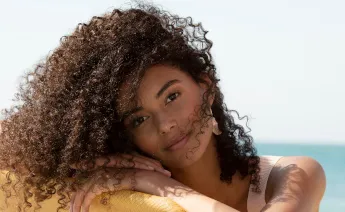
What shade should I use? How do I fix it if I mess up? You’ve got color, we’ve got answers! We’ve gathered together some of your most frequently asked color questions and they are here with some have-no-fear-we’re-here-to-save-the-day responses!

Question 1: What shade should I use?
That depends. Are you just touching up? Are you looking for a temporary solution? If so, use Koleston Root Touch Up Spray to perfectly match your current color, even if it’s not a Wella color. Do not worry if the first attempt is not perfect, because it will go with the first shampoo. It only takes 3 seconds and needs to be reapplied every time.
If you are looking for a permanent solution for your roots, then try our Koleston Root Touch Up 10 Permanent Crème. Leave it on your roots for 10 minutes and rinse – it will last until your roots grow out.
If you want to go lighter, take it slow. What means – don’t go any more than 2 shades lighter than your current color since a previously colored hair would not lift more than 2 shades. If you have medium brown hair, aim for a lighter brown before going blonde. Enjoy a few months as a lighter brunette and be sure to trim your hair to start removing some of the dark ends. Then go for another shift into the blonde-zone. To make it successful, use Koleston Permanent Hair Color Cream. For lightening more than 2 shades a previously colored hair, you will require the guidance of a professional for bleaching your hair.
Want to go darker? Don’t go all hare with your hair, make slow, steady shifts. Stay within one shade of your starting color and ease into the brunette territory. Try Soft Color in the same shade as the color you’ve been using or just one shade darker. Soft Color doesn’t lighten, so it will act as another layer of color, making it appear a bit darker.
Question 2: My highlights tend to get brassy. Can you help?
Don’t want your highlights to look like a brass quartet, huh? Keep hair brass-free by shampooing and conditioning hair with products designed for color-treated hair. If you’re out in the sun wear a hat for extra coverage.
Question 3: How do I fix my hair if I mess up when coloring at home?
No worries – for every color mishap, there’s a color to neutralize it. Of course, the best solution is to get it fixed by a professional. If you can’t do that, turn bad dye jobs into color to DYE for using this handy chart:

Question 4: What products does Wella make?
Wella, in our humble opinion, makes the best at-home hair color products around. We have everything from demi-permanent like Soft Color that lasts up to 28 washes to full-on Permanent Color like Koleston (lasts until your hair grows out or you recolor) as well as Color Concealing Conditioners, and Root Touch-Up products to help maintain your color beautiful.
Question 5: Can I match a shade of a competitor's product?
Yes! With Root Touch-up, you can extend the life of most colors, from different brands.
Question 6: What if I can't find my favorite shade at the store?
Lucky you! We have it all at our online store! Head on over there to shop now.
Question 7: Where can I find product instructions?
Everything you need will be right in that beautiful box of color.
Question 8: Should individuals with natural, uncolored hair use different hair color products than those who have previously colored their hair?
It depends on the desired result. As a first-time colorist (hooray & welcome to the club), you may want to ease into it with a demi-permanent color. See if you like it before going full-on permanent.

Question 9: Should people who want to cover gray hair use different coloring products than those who don't need coverage?
Wella Koleston permanent products are designed to cover 100% of grays, no matter the starting point.
Question 10: How can I test-run a color before committing to coloring my entire head of hair?
Commitment issues? No worries – that’s what the Strand Test is for! Basically, you just color a tiny little portion of hair that no one will see (like the underside by your ear). All instructions for how to do a Strand Test are in your beautiful box of Koleston or Soft Color, or check out all the details here.
Question 11: I would like to perm and color my hair to have a new look. Can I do both on the same day, or is it better to do one before the other?
It’s best to wait a bit. If you’re going with a permanent color, wait 7-10 days + at least one shampoo. Soft Color, which is a demi-permanent one, can be used after 1 shampoo. But do the strand test first as perms can leave hair more porous and can allow color to absorb faster.
Question 12: Should I get my hair cut before or after coloring?
It depends, basically on the type of haircut you are going for. It can happen that your hairdresser makes the first part of the haircut on dry hair, then color and finish the cut afterwards. But the general rule is to cut first. Color later.
Question 13: Does the length of my hair make any difference in the amount of hair color I will need?
Absolutely. If your hair is longer than your shoulders or very thick, you may need two boxes to fully saturate your hair.
Question 14: If I'm going to color my hair, when should I shampoo it?
Give it a good 24 hours between shampooing and coloring.
Question 15: Can I mix shades?
Yes, as long as the product you are using states in the usage instructions that it allows the mixing. The best is always to go to your hairdresser. Also, when doing this alone at home, keep in mind that for best results, you should mix shades that are no more than 2-3 shades lighter or darker than each other. Just make sure the amount of color you are mixing matches the same amount of developer.
Question 16: Lately I've been noticing that the bottom of my hair is darker or lighter than the top. Why?
This happens because the length or bottom of your hair has been colored more times than your roots, meaning there is more color in your lengths than in your roots, that have not been colored before. The easiest way is to touch up between full colorings! Get yourself some Koleston Root Touch-Up to keep the top of your hair as radiantly luscious as the bottom. When it is full coloring time, make sure you apply the roots first, and then the full length, so the roots have more time to absorb the color.
Question 17: Does hair type (curly or straight, dry or oily, coarse or fine) affect color timing?
Yes! Coarse hair generally takes more time to color, so it requires a longer timing. Fine hair generally takes less time to color so it requires a shorter timing. Hair that's dry or permed may absorb color quickly, too. Do a strand test before coloring your whole head to ensure you have the timing down.
Question 18: When should I start timing my hair color application?
Set your timer as soon as you've finished applying your hair color.
Question 19: Can I use my own conditioner instead of the conditioner in the hair color box?
You can do what you like, but we recommend the conditioner in the box as it has been specifically developed for use with hair color to help create softness and shine.

Question 20: How long can I keep a box of hair color before using it?
If you don't open the bottles, your hair color products will generally last 3 years.
Question 21: Has the Soft Color product changed? What is new in Soft Color?
We have improved it by formulating the cream color with pure shea butter that conditions your hair during color application, and the conditioning treatment with pure coconut oil and aloe vera. All that for healthy-looking hair!
Question 22: Should I apply Soft Color to dry or damp hair?
Soft Color demi-permanent hair color should be applied to dry hair that is free of styling product build-up, but don’t use shampoo within 24 hours of coloring.
Question 23: How long should I leave Soft Color on my hair?
Once the color is completely applied to hair, wait 20 minutes. For resistant gray hair, you may need to leave color on for an additional 5 minutes, for no longer than a total of 30 minutes. Do a strand test to get your unique timing.

















